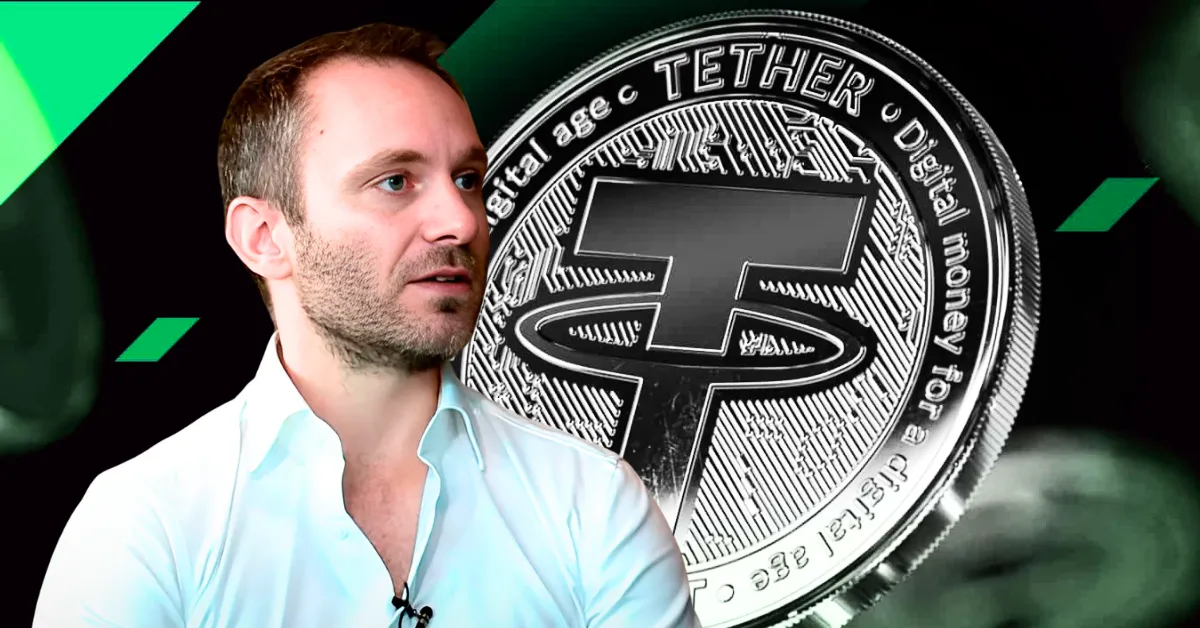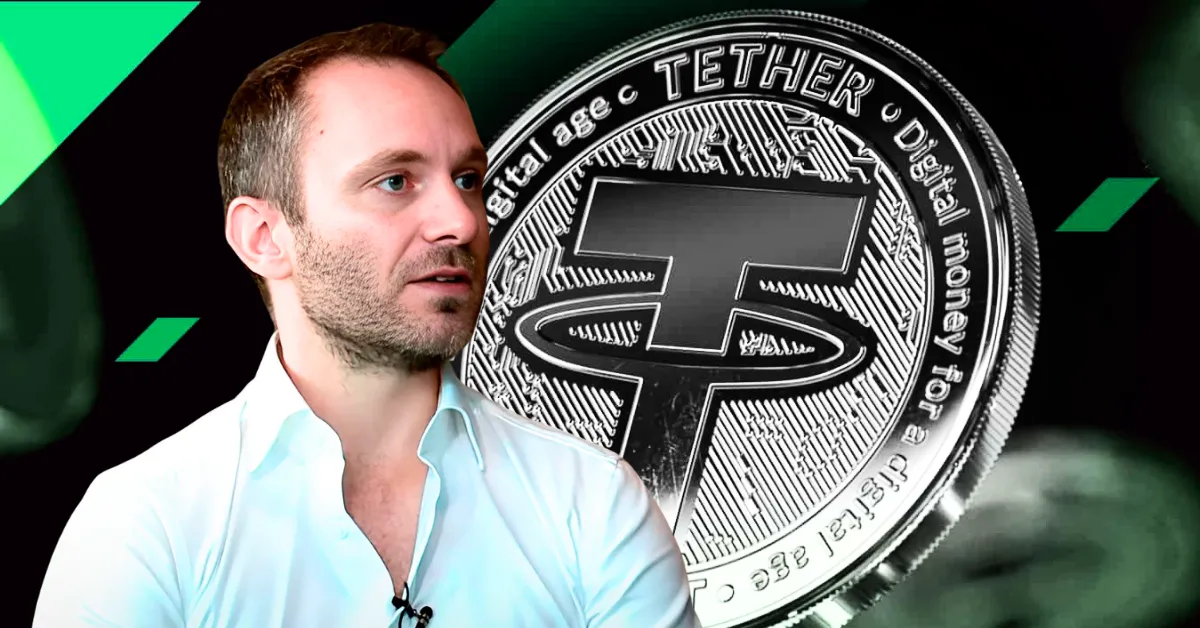Tether’s Strategic Evolution: Beyond Stablecoins into a Financial Powerhouse
Introduction: A New Era for Tether
Tether, the company behind the world’s most widely used stablecoin, USDT, is undergoing a profound transformation. While USDT remains a cornerstone of the cryptocurrency market, Tether is strategically expanding its operations into a diverse range of industries. This shift, led by CEO Paolo Ardoino, represents a bold vision to position Tether not just as a stablecoin issuer but as a multifaceted investment firm. The company’s diversification strategy spans fintech, artificial intelligence, blockchain infrastructure, and even traditional sectors like gold mining. This report explores the motivations behind Tether’s expansion, the breadth of its investments, and the broader implications for the financial and cryptocurrency ecosystems.
The Strategic Imperative for Diversification
Tether’s decision to diversify its operations is driven by a combination of financial, regulatory, and technological factors. The company’s stablecoin operations have generated substantial profits, creating a financial foundation for reinvestment. By allocating these profits into new ventures, Tether aims to fuel growth, enhance the USDT ecosystem, and mitigate risks associated with regulatory uncertainty.
Reinvesting Profits for Growth
Tether’s stablecoin operations have been highly profitable, providing the company with significant capital to explore new opportunities. Rather than merely accumulating these profits, Tether is strategically reinvesting them to drive innovation and expansion. This approach aligns with the company’s long-term vision of shaping the future of finance and technology.
Strengthening the USDT Ecosystem
Many of Tether’s investments are geared towards bolstering the infrastructure that supports USDT. By investing in payment systems, blockchain technologies, and other related areas, Tether aims to enhance the utility and adoption of its stablecoin. These investments are designed to create a more robust and efficient ecosystem for USDT, ultimately benefiting users and the broader cryptocurrency market.
Navigating Regulatory Uncertainty
The regulatory landscape for stablecoins is constantly evolving, with increasing scrutiny from authorities worldwide. Diversification allows Tether to reduce its reliance on USDT and create alternative revenue streams in case of regulatory challenges. By expanding into new sectors, Tether can mitigate risks associated with potential regulatory changes and ensure the company’s long-term sustainability.
Embracing Decentralization
Tether’s investments in blockchain and decentralized technologies align with the broader ethos of the cryptocurrency space. By supporting these projects, Tether aims to foster innovation and contribute to the development of a more decentralized financial system. This commitment to decentralization is a key aspect of Tether’s transformation and reflects its long-term vision for the future of finance.
Seizing Emerging Opportunities
Tether’s CEO, Paolo Ardoino, recognizes the transformative potential of emerging technologies like artificial intelligence. By investing in these sectors, Tether aims to position itself as a leader in the next wave of technological innovation. This proactive approach allows Tether to capitalize on new opportunities and stay ahead of the curve in the rapidly evolving financial and technological landscape.
The Breadth of Tether’s Investment Portfolio
Tether’s investment portfolio is remarkably diverse, encompassing over 120 companies across various sectors. This strategic diversification reflects the company’s commitment to exploring new opportunities and shaping the future of finance and technology.
Fintech: Enhancing Financial Services
Tether is investing in fintech platforms to improve payment processing, cross-border transactions, and other financial services. These investments are designed to drive adoption of USDT and enhance the overall utility of the stablecoin. By supporting fintech innovation, Tether aims to create a more efficient and inclusive financial system.
Artificial Intelligence: Harnessing the Power of AI
Recognizing the potential of artificial intelligence, Tether is allocating capital to AI firms. These investments may be aimed at integrating AI into Tether’s own operations or developing new AI-powered financial products. By embracing AI, Tether seeks to leverage cutting-edge technology to enhance its services and stay competitive in the rapidly evolving financial landscape.
Blockchain Infrastructure: Building the Future
Investments in blockchain technology aim to strengthen the underlying infrastructure that supports cryptocurrencies and decentralized applications. By supporting blockchain innovation, Tether aims to create a more robust and efficient ecosystem for USDT and other digital assets. These investments are crucial for the long-term growth and sustainability of the cryptocurrency market.
Bitcoin Mining: Securing the Bitcoin Network
Tether has invested in Bitcoin mining operations, demonstrating its commitment to the Bitcoin network. These investments may be aimed at securing a supply of Bitcoin for Tether’s reserves or other purposes. By supporting Bitcoin mining, Tether contributes to the security and decentralization of the Bitcoin network, which is a key aspect of the broader cryptocurrency ecosystem.
Telecommunications: Improving Communication Infrastructure
Tether’s investment into telecoms signals a push towards improved communication infrastructure, particularly in developing regions. By supporting telecommunications innovation, Tether aims to enhance connectivity and enable greater access to financial services. These investments are designed to create a more inclusive and interconnected global financial system.
Gold Mining: Diversifying Holdings
Investment into gold mining, a traditional sector, represents a move to diversify Tether’s holdings and potentially hedge against risks associated with digital assets. By investing in gold mining, Tether aims to create a more balanced and resilient investment portfolio, capable of weathering market volatility and regulatory uncertainty.
Sports: Branding and Marketing Strategy
Tether also has investments in entities like Juventus, the football club, although the exact intention of these investments is not explicit. These investments may be part of a branding and marketing strategy, aimed at enhancing Tether’s visibility and reputation in the broader financial and sports communities.
USDT: The Foundation of Tether’s Success
Despite Tether’s diversification efforts, USDT remains its core product and primary source of revenue. The stablecoin has achieved a market capitalization exceeding $160 billion, solidifying its position as the dominant player in the stablecoin market. Tether continues to mint new USDT tokens to meet growing demand, indicating its continued relevance in facilitating cryptocurrency trading and providing liquidity to the market.
The Role of USDT in the Cryptocurrency Market
USDT serves as a safe haven during market volatility, with trading volumes surging during periods of uncertainty. This stability and liquidity make USDT an essential tool for traders and investors in the cryptocurrency market. By maintaining its dominance in the stablecoin market, Tether ensures the continued relevance and utility of USDT.
Ensuring Stability and Liquidity
The impressive amount of U.S. Treasury holdings, approaching $120 billion, is a strategic decision to ensure the stability and liquidity of Tether’s reserves. These holdings provide a strong foundation for USDT, enhancing its credibility and reliability as a stablecoin. By maintaining robust reserves, Tether aims to instill confidence in users and the broader cryptocurrency community.
Implications and Potential Challenges
Tether’s transformation into a diversified investment firm has several implications for the cryptocurrency and financial industries. While the company’s expansion offers numerous opportunities, it also raises concerns about systemic risk, regulatory scrutiny, and transparency.
Increased Competition and Innovation
Tether’s entry into various sectors will intensify competition, potentially driving innovation and benefiting consumers. By investing in fintech, AI, and blockchain infrastructure, Tether aims to foster a more dynamic and competitive financial ecosystem. This increased competition may lead to the development of new products and services, ultimately benefiting users and the broader market.
Greater Interconnectedness Between Markets
Tether’s investments create a web of interconnectedness between the cryptocurrency market and traditional industries. This blurring of the lines between the two markets may lead to greater integration and collaboration, ultimately enhancing the efficiency and resilience of the global financial system.
Systemic Risk and Financial Stability
Tether’s growing influence raises concerns about systemic risk. If Tether were to face financial difficulties, it could have a ripple effect across multiple sectors, potentially destabilizing the broader financial system. To mitigate these risks, Tether must maintain robust reserves and implement sound risk management practices.
Regulatory Scrutiny and Compliance
Tether’s expansion will likely attract increased regulatory scrutiny. Authorities may seek to regulate Tether not only as a stablecoin issuer but also as an investment firm. To navigate this complex regulatory landscape, Tether must prioritize compliance and transparency, ensuring that its operations align with relevant laws and regulations.
Transparency and Accountability
While Tether has taken steps to improve transparency regarding its reserves, concerns remain about the company’s overall operations and investment strategies. To address these concerns, Tether must prioritize transparency and accountability, providing users and regulators with clear and accurate information about its activities and financial health.
A Vision for the Future: Beyond Fiat Currencies
Interestingly, despite its current dependence on the U.S. dollar and other fiat currencies for its USDT stablecoin, Tether’s CEO, Paolo Ardoino, has stated he believes USDT will one day be “useless”. This ambitious, even radical, view suggests a long-term vision where decentralized digital currencies might eclipse traditional financial systems. By investing in blockchain and decentralized technologies, Tether aims to contribute to the development of a more decentralized and inclusive financial system, ultimately reshaping the future of finance.
Conclusion: A Bold New Chapter for Tether
Tether’s strategic pivot from a stablecoin issuer to a diversified investment firm marks a bold new chapter in its history. While USDT remains its flagship product, the company is actively expanding its reach into various sectors, seeking to shape the future of finance and technology. This diversification strategy offers both opportunities and challenges. Tether’s investments could foster innovation, strengthen the cryptocurrency ecosystem, and generate new revenue streams. However, it also raises concerns about systemic risk, regulatory scrutiny, and transparency. Ultimately, the success of Tether’s transformation will depend on its ability to navigate these challenges and execute its vision effectively. The journey ahead will be one of considerable attention, especially given the sheer scale of Tether’s influence in the crypto-sphere and the company’s expressed aim to disrupt established industries. As Tether continues to evolve, its impact on the financial and cryptocurrency landscapes will be closely watched, shaping the future of finance in profound ways.












